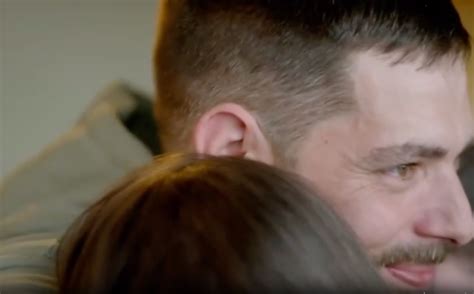
A 40-year-old man, abandoned as a newborn in a plastic bag and left to die, has reunited with the woman who rescued him, a nurse he calls “B,” decades after the life-altering event. The reunion, facilitated by social media and persistent searching, marks the culmination of a lifelong quest for identity and closure for the man, identified only as Benjamin.
Benjamin’s life began in precarious circumstances in Atlanta, Georgia, in 1984. Discovered shortly after birth inside a plastic bag, he was rushed to the hospital where a dedicated nurse, referred to as “B,” provided the critical care that saved his life. This act of compassion set in motion a remarkable journey that has now come full circle.
Benjamin’s early life was marked by uncertainty, but he eventually found stability through adoption. However, the knowledge of his abandonment and the mystery surrounding his origins fueled a persistent desire to uncover his past and express his gratitude to the person who gave him a second chance at life. “I was left in a plastic bag to die. If it wasn’t for B, I wouldn’t be here,” Benjamin stated, emphasizing the profound impact of her actions.
His search gained momentum in recent years with the aid of social media platforms, where he shared his story and appealed for information. The response was overwhelming, with countless individuals offering support and assistance. Eventually, the online campaign led to a breakthrough, connecting him with “B,” whose full name has not been publicly released to protect her privacy.
The emotional reunion, captured on video and widely shared, shows Benjamin embracing “B,” expressing his heartfelt appreciation for her life-saving intervention. “Thank you for saving my life,” he told her, a sentiment that encapsulates the decades of gratitude he has carried. “B” shared her own recollections of the event, describing the urgency and dedication with which she and her colleagues worked to stabilize the abandoned infant.
This story is not just about a reunion; it highlights the enduring power of human connection, the importance of compassion, and the resilience of the human spirit. It also underscores the challenges faced by individuals who are abandoned at birth and the complex journey of self-discovery that often follows.
The Discovery and Immediate Aftermath
On a cold morning in 1984, Benjamin’s life hung precariously in the balance. Discarded in a plastic bag, a symbol of unwantedness and vulnerability, he was discovered by a passerby who alerted the authorities. The newborn was immediately transported to a nearby hospital in Atlanta, Georgia. Upon arrival, the medical team, including the nurse known as “B,” recognized the critical nature of his condition. He was suffering from hypothermia and dehydration, his tiny body struggling to survive.
“B” and her colleagues worked tirelessly to stabilize Benjamin, providing warmth, nourishment, and constant monitoring. Their dedication was crucial in ensuring his survival during those initial critical hours. “It was touch and go for a while,” “B” recalled, emphasizing the severity of his condition. The medical team’s swift and decisive actions were instrumental in preventing irreversible damage and giving him a fighting chance.
The discovery of an abandoned infant sparked a police investigation aimed at identifying the birth parents. However, despite their efforts, the investigation yielded no conclusive results, and the circumstances surrounding Benjamin’s abandonment remain a mystery. This lack of information added to the challenges he would face later in life as he sought to understand his origins.
Following his initial recovery, Benjamin was placed in foster care, where he received the care and support he needed to thrive. He eventually found a permanent home through adoption, providing him with a stable and loving environment. However, the knowledge of his abandonment remained a constant presence in his life, fueling his desire to learn more about his past.
The Years of Searching and the Role of Social Media
As Benjamin grew older, his curiosity about his biological family and the circumstances of his abandonment intensified. He embarked on a personal quest to uncover his roots, piecing together fragmented information and following any leads that emerged. However, the lack of official records and the passage of time presented significant obstacles.
In recent years, Benjamin turned to social media platforms as a means of amplifying his search. He created profiles on various sites and shared his story with the online community. He posted pictures of himself, described his background, and appealed for any information that might help him identify “B” or his biological parents.
The response to Benjamin’s social media campaign was overwhelming. Countless individuals shared his story, offered support, and provided potential leads. The power of social media to connect people across geographical boundaries and facilitate information sharing proved to be instrumental in advancing his search.
“I never imagined that social media could be so powerful,” Benjamin said. “It allowed me to reach out to people I would never have been able to connect with otherwise.” The online community rallied around him, providing encouragement and assisting in the search for “B.”
One of the key breakthroughs in the search came when someone recognized “B” from a photograph Benjamin had posted. The individual contacted Benjamin and provided him with information that ultimately led to the successful identification and location of the nurse.
The Emotional Reunion and Its Significance
After years of searching, Benjamin finally achieved his goal of reuniting with “B.” The emotional encounter, which took place in a private setting, was captured on video and shared with the public. The footage shows Benjamin embracing “B,” expressing his profound gratitude for her life-saving actions.
“Thank you for saving my life,” he repeated, his voice filled with emotion. “I wouldn’t be here today if it weren’t for you.” “B” responded with warmth and compassion, sharing her own recollections of the events surrounding his birth and the dedication of the medical team that cared for him.
The reunion provided Benjamin with a sense of closure and a deeper understanding of his origins. It also allowed him to express his gratitude to the person who played such a pivotal role in his life. “Meeting ‘B’ was one of the most meaningful experiences of my life,” he said. “It filled a void that had been there for as long as I can remember.”
The story of Benjamin and “B” has resonated with people around the world, highlighting the enduring power of human connection and the importance of compassion. It serves as a reminder that even in the face of adversity, acts of kindness can have a profound and lasting impact on individuals and communities.
The Broader Implications of Abandonment and Adoption
Benjamin’s story sheds light on the challenges faced by individuals who are abandoned at birth and the complex journey of self-discovery that often follows. Abandonment can have profound psychological and emotional consequences, leaving individuals with feelings of rejection, insecurity, and identity confusion.
Many abandoned children struggle to understand why they were left behind and may grapple with questions about their self-worth and belonging. The lack of information about their biological families can also create a sense of disconnection and a desire to uncover their roots.
Adoption offers a pathway to stability and belonging for abandoned children, providing them with a loving and supportive family environment. However, adopted individuals may still experience feelings of loss and curiosity about their biological origins. Open adoption, which allows for ongoing contact between adoptive and biological families, can help address some of these challenges by providing adopted individuals with access to information and connection to their past.
The story of Benjamin and “B” underscores the importance of providing support and resources to abandoned children and adopted individuals. This includes access to counseling, support groups, and adoption records. It also requires raising awareness about the challenges faced by these individuals and promoting understanding and empathy within communities.
Ethical Considerations and Privacy Concerns
While Benjamin’s story is inspiring, it also raises important ethical considerations regarding privacy and the sharing of personal information. The decision to share his story publicly was a personal one, and he had the right to control the narrative and protect his privacy.
However, the sharing of information about “B” and other individuals involved in his case raises concerns about their privacy rights. It is important to respect the wishes of individuals who prefer not to be identified and to avoid sharing information that could compromise their safety or well-being.
Journalists and media outlets have a responsibility to balance the public’s right to know with the need to protect individual privacy. This requires careful consideration of the potential impact of their reporting and a commitment to ethical and responsible journalism.
The Ongoing Journey of Self-Discovery
Benjamin’s reunion with “B” marks a significant milestone in his journey of self-discovery, but it is not the end of the road. He continues to explore his past, seeking to learn more about his biological family and the circumstances of his abandonment.
He is also using his story to raise awareness about the challenges faced by abandoned children and adopted individuals. He hopes to inspire others to embrace their past, find healing, and connect with their communities.
Benjamin’s story is a testament to the resilience of the human spirit and the power of hope. It demonstrates that even in the face of adversity, it is possible to find healing, connection, and meaning in life.
Lessons Learned and Moving Forward
The story of Benjamin and “B” offers valuable lessons about the importance of compassion, the power of human connection, and the resilience of the human spirit. It also highlights the challenges faced by abandoned children and adopted individuals and the need for greater support and understanding within communities.
As we move forward, it is important to remember the lessons learned from this remarkable story and to continue working towards a world where all children are valued, protected, and given the opportunity to thrive.
Frequently Asked Questions (FAQ)
-
What were the circumstances of Benjamin’s abandonment?
- Benjamin was abandoned as a newborn in a plastic bag in Atlanta, Georgia, in 1984. He was discovered by a passerby and taken to a hospital. The circumstances surrounding his abandonment, including the identity of his birth parents, remain unknown. As quoted from the source, “I was left in a plastic bag to die. If it wasn’t for B, I wouldn’t be here.”
-
Who is “B” and what role did she play in Benjamin’s life?
- “B” is a nurse who provided critical care to Benjamin when he was brought to the hospital as an abandoned newborn. She and her colleagues worked tirelessly to stabilize him and ensure his survival. Benjamin credits “B” with saving his life, stating that he wouldn’t be here today without her.
-
How did Benjamin find “B” after so many years?
- Benjamin used social media platforms to share his story and appeal for information about “B.” His online campaign gained significant traction, and eventually, someone recognized “B” from a photograph and provided Benjamin with the information he needed to contact her.
-
What was the significance of the reunion between Benjamin and “B”?
- The reunion provided Benjamin with a sense of closure and allowed him to express his gratitude to the person who saved his life. It also gave him a deeper understanding of his origins and the challenges he faced as an abandoned child.
-
What are the broader implications of Benjamin’s story for abandoned children and adopted individuals?
- Benjamin’s story sheds light on the challenges faced by individuals who are abandoned at birth and the complex journey of self-discovery that often follows. It underscores the importance of providing support and resources to these individuals, including access to counseling, support groups, and adoption records. It also calls for raising awareness about the challenges they face and promoting understanding and empathy within communities.
Expanded Analysis and Background Information
The story of Benjamin’s abandonment and subsequent reunion with “B” is a compelling narrative that touches upon several critical societal issues, including child abandonment, adoption, and the long-term impact of early childhood experiences. To fully understand the significance of this story, it is essential to delve deeper into these related topics.
Child Abandonment: A Global Issue
Child abandonment is a pervasive problem that affects children across the globe. It encompasses a range of situations, from newborns left in public places to older children deserted by their parents or guardians. The reasons for child abandonment are complex and multifaceted, often stemming from poverty, lack of resources, social stigma, mental health issues, and substance abuse.
In many countries, child abandonment is a criminal offense, reflecting the societal recognition of the inherent vulnerability of children and the responsibility of adults to provide them with care and protection. However, laws and enforcement mechanisms vary significantly, and the problem persists despite legal prohibitions.
The consequences of child abandonment can be devastating for the affected children. They are often left without adequate food, shelter, medical care, and emotional support. They may experience trauma, developmental delays, and mental health problems. They are also at increased risk of exploitation, abuse, and trafficking.
Organizations such as UNICEF and Save the Children work tirelessly to address the issue of child abandonment by providing support to vulnerable families, advocating for policy changes, and promoting awareness about the rights of children. These efforts are crucial in preventing child abandonment and mitigating its harmful effects.
Adoption: A Lifeline for Abandoned Children
Adoption offers a lifeline for abandoned children, providing them with a stable and loving family environment. Adoption is a legal process that transfers parental rights and responsibilities from the biological parents to adoptive parents. It can take various forms, including domestic adoption, international adoption, and foster care adoption.
The adoption process is often complex and involves rigorous screening and assessment of prospective adoptive parents. This is to ensure that the children are placed in safe and nurturing homes. Adoptive parents undergo background checks, home studies, and interviews to determine their suitability to care for a child.
Adoption can provide abandoned children with a sense of belonging, security, and identity. It can also give them access to education, healthcare, and other resources that they might not otherwise have. However, adopted individuals may still experience feelings of loss and curiosity about their biological origins.
Open adoption, which allows for ongoing contact between adoptive and biological families, can help address some of these challenges by providing adopted individuals with access to information and connection to their past. Open adoption is becoming increasingly common, as it is recognized as being in the best interests of the child.
The Long-Term Impact of Early Childhood Experiences
Early childhood experiences have a profound and lasting impact on individuals’ development and well-being. Abandonment, neglect, and abuse can have detrimental effects on children’s physical, emotional, and cognitive development.
Children who experience early adversity are at increased risk of developing mental health problems, such as anxiety, depression, and post-traumatic stress disorder. They may also have difficulty forming healthy relationships, regulating their emotions, and coping with stress.
Research has shown that early childhood experiences can even affect brain development, altering the structure and function of the brain in ways that can have long-term consequences. These changes can affect learning, memory, and emotional regulation.
However, it is important to note that resilience is possible. With appropriate support and interventions, children who have experienced early adversity can overcome the challenges they face and lead fulfilling lives. Therapy, counseling, and supportive relationships can help children heal from trauma and develop coping skills.
The Role of Compassion and Community Support
The story of Benjamin and “B” highlights the crucial role of compassion and community support in the lives of vulnerable individuals. “B’s” act of kindness in caring for the abandoned newborn saved his life and set him on a path to healing and self-discovery.
The support of the online community in Benjamin’s search for “B” demonstrates the power of human connection and the willingness of people to help those in need. The story serves as a reminder that even small acts of kindness can have a profound impact on others.
Communities can play a vital role in supporting abandoned children and adopted individuals by providing access to resources, raising awareness about the challenges they face, and promoting understanding and empathy. This can include supporting organizations that provide services to vulnerable families, volunteering time to mentor children, and advocating for policies that protect the rights of children.
The Importance of Adoption Records and Transparency
Access to adoption records is a complex and controversial issue, with differing perspectives on the rights of adopted individuals, biological parents, and adoptive parents. Adopted individuals often desire access to information about their biological families, including their medical history and cultural background.
Biological parents may have privacy concerns and may not want to be identified. Adoptive parents may also have concerns about the impact of contact between adopted individuals and their biological parents on their family dynamics.
Many states have laws that restrict access to adoption records, requiring adopted individuals to petition the court for access or obtain consent from biological parents. Other states have open adoption laws, which allow adopted individuals to access their records without court intervention.
The debate over adoption records and transparency highlights the need to balance the rights of all parties involved and to ensure that adopted individuals have access to information that is important to their identity and well-being.
The Power of Forgiveness and Healing
Benjamin’s story also touches upon the power of forgiveness and healing. While he was abandoned as a newborn, he has chosen to focus on the positive aspects of his life and to express gratitude to those who have helped him along the way.
Forgiveness is not about condoning the actions of others but about releasing anger, resentment, and bitterness. It is a process that can lead to healing and emotional well-being.
Benjamin’s ability to forgive his birth parents, despite the pain of abandonment, is a testament to his resilience and his commitment to living a fulfilling life. His story serves as an inspiration to others who have experienced trauma and loss.
Looking Ahead: Continued Advocacy and Support
The story of Benjamin and “B” is a reminder that there is still much work to be done to support abandoned children and adopted individuals. Continued advocacy is needed to raise awareness about the challenges they face and to promote policies that protect their rights.
Support services, such as counseling, therapy, and support groups, are essential to helping these individuals heal from trauma and develop coping skills. It is also important to provide educational resources to adoptive parents and foster parents to help them understand the unique needs of children who have experienced early adversity.
By working together, we can create a world where all children are valued, protected, and given the opportunity to thrive.
The journey of Benjamin, from being abandoned in a plastic bag to reuniting with the nurse who saved his life, is a powerful example of resilience, hope, and the enduring impact of human kindness. It serves as a reminder of the importance of compassion, community support, and advocacy in the lives of vulnerable individuals. While his story is unique, it also reflects the experiences of countless abandoned children and adopted individuals who are seeking to understand their past, heal from trauma, and build fulfilling lives. By learning from his story and taking action, we can create a more just and compassionate world for all children.









